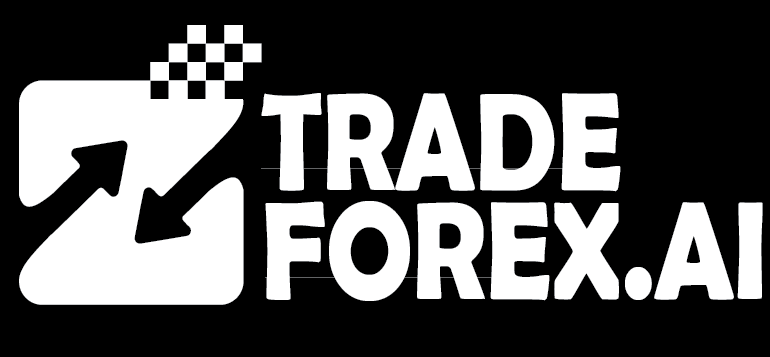CFD trading has become a popular way to access financial markets without buying assets directly. Instead of owning stocks, commodities, or currencies, you trade on price movements. This method allows both professionals and CFD traders, including beginners, to speculate on markets with flexibility. CFD trading, as explained, simply means entering a contract with a broker to exchange the difference between opening and closing prices. This type of contract for difference enables traders to benefit from both rising and falling prices.
The appeal of CFD trading lies in its flexibility. You can participate in forex, stocks, commodities, indices, or even cryptocurrencies with one account. Because CFD trading works through price differences, it eliminates the need to hold the physical asset. Many traders now use CFDs as a primary method of speculation because they are efficient, versatile, and easy to understand.
Still, learning how CFD trading works requires careful study. Leverage, margin, and risk management play a crucial role in long-term success. To make the process easier, this guide will cover CFD trading in detail. It explains how contracts operate, the advantages and disadvantages, and strategies that traders use every day. It also highlights how CFD trading for beginners can avoid common mistakes and build confidence before trading live markets.
Understanding the Basics of CFD Trading
At its core, CFD Trading Explained means speculating on price changes without ownership of the actual asset. A Contract for Difference records the value of an asset at the time you open a trade. When you close the trade, the difference between the opening and closing price is settled. If the price moved in your favor, you make a profit. If it moved against you, you face a loss.
This concept makes CFD trading highly adaptable. Whether you trade gold, the S&P 500, or EURUSD, the logic remains the same. You are trading contracts, not assets. For example, suppose oil is trading at $80 per barrel. You open a long CFD because you expect the price to rise. If the market moves to $85, you earn the difference. You forfeit the difference in the event that it falls to $75. That is how CFD trading works in practice.
For CFD Trading for Beginners, this model is easy to understand. It removes complexities like custody, storage, or ownership rights. You only focus on whether the market goes up or down. This is why Contract for Difference agreements are among the simplest trading tools available.
How CFD Trading Works with Leverage and Margin
Leverage is one of the most important features of CFD trading. With leverage, you control a much larger position than your initial deposit. The deposit you provide is called margin. This means you only commit a fraction of the trade’s full value.
Let’s break the concept down with an example. You want to open a contract for difference (CFD) on Tesla stock. The price is $200, and you decide to trade 100 shares. The total value is $20,000. With 10:1 leverage, you only need a $2000 margin. You make $1000 if Tesla’s price increases to $210. But if Tesla falls to $190, you lose $1000. This example shows exactly how CFD trading works under leverage.
CFD trading explained often includes a warning: leverage magnifies both profits and losses. Beginners must approach with caution. CFD Trading for Beginners should always test strategies on demo accounts before trading with real money. Contract for Difference brokers often provide calculators to help traders understand margin requirements and potential outcomes.
The Costs Involved in CFD Trading
Like all forms of trading, CFD trading comes with costs. These include spreads, commissions, overnight financing, and slippage. Understanding these expenses is key to knowing how CFD trading works in real markets.
The spread is the difference between the buy and sell price. For example, if EURUSD is quoted at 1.1000–1.1002, the spread is two pips. This cost is built into every trade. Some brokers also charge commissions, particularly on stock CFDs.
Another major cost is overnight financing. When you hold a Contract for Difference overnight, the broker applies a daily fee. This fee is based on the size of your position. For long-term trades, financing can become significant. CFD trading for beginners should start with short-term trades to avoid heavy charges.
Finally, slippage occurs during volatile market conditions. Your order may execute at a slightly different price than expected. Such volatility is a natural part of fast-moving markets. CFD Trading Explained clearly highlights these costs so traders can plan better.
Advantages of CFD Trading in Global Markets
CFD trading has become a preferred choice for many traders because it combines flexibility, accessibility, and efficiency. Unlike traditional investing, you don’t need to physically own assets such as shares or commodities. Instead, a contract for difference allows you to speculate on the price movement itself. This makes CFD trading highly adaptable and attractive to modern traders who want more control over their strategies.
Some key advantages include
- Broad market access: One of the strongest benefits of CFD trading is the ability to trade across multiple markets. You can access forex, stocks, commodities, and indices all through a single trading account. This saves time, simplifies portfolio management, and opens the door to countless opportunities.
- Profit in both directions: Unlike traditional investments, where you usually benefit only when prices rise, CFD trading works in rising and falling markets. You can go long if you expect prices to climb or short if you believe they will fall. This feature makes Contract for Difference agreements especially valuable during volatile periods.
- Leverage advantage: Another major benefit is leverage. With a relatively small deposit, you can control much larger trades. This enables market entry for novices in CFD trading without requiring a significant amount of capital. However, while leverage increases potential profits, it also increases risks.
- Advanced trading platforms: Most brokers offering CFDs provide advanced tools. Traders get real-time charts, technical indicators, news updates, and automated risk controls. These resources make learning how CFD trading works much easier and allow traders to make better decisions.
For both beginners and experienced investors, these advantages highlight why CFD trading explained in detail often emphasizes accessibility, opportunity, and adaptability as its strongest selling points.
Risks of CFD Trading: Every Trader Should Know
While CFD trading offers clear advantages, every trader must understand the risks before entering the market. Overlooking these risks can lead to significant losses, especially for inexperienced traders. A well-rounded perspective ensures that traders approach markets responsibly and protect their capital.
Some of the most important risks include:
- Leverage poses significant risks due to its power. While it allows traders to control bigger positions with smaller deposits, it can also wipe out an account quickly if the market moves in the wrong direction. This aspect is why learning how CFD trading works with leverage is crucial.
- Margin calls: A Contract for Difference requires margin to maintain open positions. If account equity drops below the required margin, brokers may issue a margin call or close trades automatically. This prevents deeper losses but also removes the trader’s control.
- Overnight financing costs: When traders hold positions overnight, CFDs often incur daily financing fees. Over time, these costs can add up, making long-term positions expensive. For this reason, many traders use CFDs primarily for short-term strategies.
- Emotional risks: CFD Trading for Beginners is often challenging because emotions such as greed and fear can influence decisions. Impulsive trading without discipline or planning often leads to poor outcomes.
CFD trading is explained thoroughly and always emphasizes risk management. Traders must use stop-loss orders, set clear position sizes, and plan trades carefully. By understanding both the opportunities and the dangers, beginners and professionals can approach Contract for Difference trading with balance and caution.
Strategies Used in CFD Trading
CFD trading allows traders to apply a variety of strategies depending on their goals, risk tolerance, and trading style. Because a contract for difference works in both rising and falling markets, strategies can be highly flexible. Some focus on technical analysis, while others rely on fundamental events to guide decisions.
Here are the most common strategies used in CFD trading, as explained in practice:
- Trend following: Traders identify strong trends and trade in the same direction. For example, if a stock continues to make higher highs, traders open long positions. Similarly, if a currency consistently falls, traders go short. This method helps align trades with overall market momentum.
- Range trading: Markets often move within support and resistance zones. In range trading, traders buy near support and sell near resistance. This strategy works best when markets lack strong direction but show repeated price patterns.
- Breakout trading: When price breaks through a key support or resistance level, traders expect strong momentum. Breakouts often occur after consolidation phases. For example, a contract for a difference in gold may surge after breaking past a long-term resistance level.
- Technical analysis: Tools like moving averages, RSI, and MACD provide entry and exit signals. They confirm whether a trend is strong, if a market is overbought or oversold, or if momentum is shifting.
- Fundamental analysis: Economic news, earnings reports, or central bank decisions can drive markets. For instance, inflation fears may push traders to buy gold CFDs as a safe-haven asset.
CFD trading for beginners should avoid overcomplicating strategies. Starting with simple methods like support and resistance trading on demo accounts builds experience. Over time, traders can add advanced techniques. This approach ensures beginners learn how CFD trading works in real time without taking unnecessary risks.
Read here to learn more about “Top 5 CFD Prop Trading Firms with Best Conditions in 2025“
Practical Tips for CFD Trading Beginners
CFD trading for beginners requires careful planning, patience, and discipline. Rushing into trades without preparation often leads to losses. New traders should focus on learning step by step rather than chasing fast profits. Starting small and staying consistent is the best path to success.
Some essential tips include:
- Start small with low leverage: Use smaller positions and modest leverage. This reduces risk while allowing you to gain real market experience.
- Always use stop losses: A stop-loss order protects you from excessive losses by closing a trade at a set price. It ensures that one bad trade does not wipe out your account.
- Keep a trading journal: Recording trades, entry reasons, outcomes, and lessons creates a valuable learning tool. Over time, this journal highlights your strengths and weaknesses.
- Focus on education: CFD trading explained through webinars, guides, and demo accounts helps beginners build a strong foundation. Continuous learning improves decision-making and risk control.
Case Study: A Beginner Learns Risk Management
Consider Ravi, a beginner who started CFD trading with $2000. At first, he used high leverage and placed large trades. After a series of losses, his account balance dropped quickly. Recognizing the mistake, he decided to change his approach.
Ravi reduced his trade size, applied strict stop-loss orders, and focused on one market—EURUSD. He also began keeping a trading journal to review his decisions. Within three months, his account stabilized, and his losses decreased. More importantly, his confidence grew as he learned how CFD trading works with real discipline.
This example shows that success in Contract for Difference trading comes not from luck but from patience, strategy, and education. CFD trading for beginners who adopt these practices early will build long-term consistency.
How CFD Trading Works in Real Market Scenarios
The best way to understand how CFD trading works is by looking at real market situations. Because a contract for difference mirrors the price movements of the underlying asset, every profit or loss is directly tied to how the market moves after you open a trade. By examining forex, commodities, and stocks, we can see how traders apply CFDs in practice.
Example 1: Forex Trading
Forex is one of the most popular markets for CFD trading. Imagine a trader opening a CFD on GBPUSD at 1.2500 with a position size of one lot, equal to 100,000 units. In this case, each pip is worth $10. If the pair rises to 1.2600, the trader earns a $1000 profit. If the price drops to 1.2400 instead, the trader records a $1000 loss. This simple scenario shows CFD trading explained in forex and why it appeals to many traders who want direct exposure to currency movements.
Example 2: Commodity Trading
CFD trading for beginners often extends to commodities like gold. Suppose gold is trading at $1900 per ounce. A trader expects prices to rise and enters a contract for difference using leverage. If gold climbs to $1950, the trader gains $50 per ounce traded. However, if it falls to $1850, the trader experiences the same level of loss. This example highlights how CFDs provide exposure to valuable resources without the need to physically buy or store them.
Example 3: Stock Trading
Stocks also provide excellent opportunities for Contract for Difference trading. Imagine Tesla shares are priced at $200. A trader opens a CFD for 100 shares using margin. If Tesla’s price increases to $210, the profit equals $1000. If the stock falls to $190, the trader faces a $1000 loss. This shows that CFD trading works the same way across equities, offering flexibility without requiring ownership of the actual shares.
Why These Examples Matter
These scenarios demonstrate that CFD trading works consistently across multiple asset classes. Whether it is forex, commodities, or stocks, the mechanics remain the same: you gain when the market moves in your favor and lose when it moves against you. For CFD trading for beginners, starting with smaller trade sizes is recommended. Practicing with Contract for Difference examples like these helps reduce risk, build confidence, and develop the skills needed to succeed in live markets.
The Future of CFD Trading in Markets
CFD trading is growing rapidly worldwide. Online platforms and mobile apps make access easier than ever. Millions of traders now rely on CFDs for market speculation.
Regulation is also shaping the industry. Many countries impose leverage limits and require brokers to provide negative balance protection. These steps improve safety for retail traders.
Education is expanding too. Brokers offer free courses, research tools, and interactive platforms. CFD trading for beginners now has more support than ever.
Contract for Difference trading will remain important as global markets evolve. Whether you trade forex, stocks, or commodities, CFDs offer fast and flexible access. Knowing how CFD trading works today prepares traders for tomorrow’s opportunities.
Conclusion: Why CFD Trading Matters Today
CFD Trading Explained in detail shows why it is a preferred method for many traders. It provides access to global markets without ownership. Traders can go long or short, use leverage, and diversify strategies.
However, CFD trading is not without risk. Leverage can amplify losses, overnight financing can add costs, and emotions can cause mistakes. Contract for Difference agreements require discipline and careful planning.
For CFD Trading for Beginners, the journey should start with education, practice, and small trades. Learning how CFD trading works step by step builds the confidence needed for success. With preparation and patience, CFD trading can become a valuable part of a trading career.
Read here to learn more about “Liquidity Zones vs Order Blocks Key Differences Explained for 2025“

I’m Chaitali Sethi — a seasoned financial writer and strategist specializing in Forex trading, market behavior, and trader psychology. With a deep understanding of global markets and economic trends, I simplify complex financial concepts into clear, actionable insights that empower traders at every level. Whether it’s dissecting winning strategies, breaking down market sentiment, or helping traders build the right mindset, my content bridges the gap between information and implementation.




